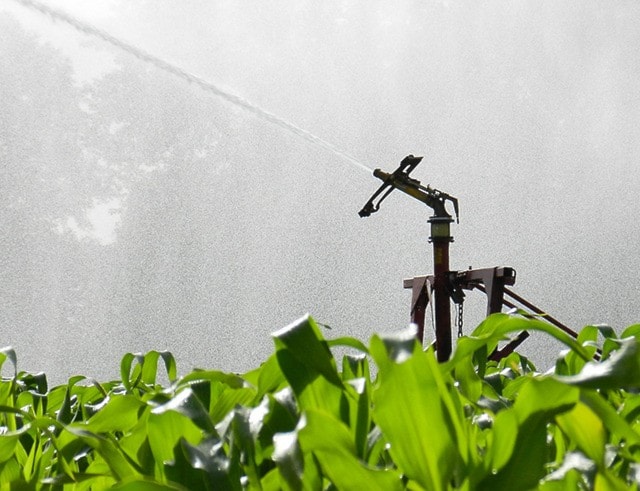Summer may have officially started on Sunday, but a hot, dry spring has already had an effect on many Fraser Valley farmers and their crops.
Mary Forstbauer and her family grow a multitude of organic crops, in the field and in hoop houses at their farm on Prairie Central Road. As seasoned, experienced farmers, they have a slight edge over the casual backyard grower. But there are some things that are beyond anyone’s control, she says.
Dry, hot weather has led to very early harvest times for perennials, like berries and tree fruits. And it’s important for farm market consumers to know that these early times are driven entirely by the weather.
“For example, strawberry season should just be starting now and it’s already done,” she says. So anyone who is hoping to find large amounts of fresh berries for their annual jam or pie making, is probably going to be out of luck. And that also spells trouble for farmers, as the processors who normally buy large amounts of produce aren’t always ready so early.
Many perennial crops are a full month and a half ahead of schedule, she explains. Cherry season is already here, also early, and the same goes for raspberries.
“It’s not the fault of the farmer,” she explains. “That’s a part of farming and part of what we expect. We work with nature and use nature as much as we can to our advantage.”
On the flip side, spring crops can also be damaged by too much rain, which leads to fungus. That luckily wasn’t an issue this spring, although irrigation became even more important.
While the perennial crops are vulnerable to weather fluctuations, farmers can control their annual planting. And for the Forstbauers, that will be kept to schedule.
“Our annual crops are on target and that’s because you sort of plan according to scheduling to what you’ve done in past years,” she says.
She’s also been watching for a cloud burst, but not for the reasons one would think. While rain would welcome, too much rain can be devastating on desert-dry ground.
“Look at what happened in Cache Creek. There could be some unexpected flooding, because the ground can only absorb as much as it can absorb,” she says. “When the ground is so dry it doesn’t have a chance to soak in.”
While crop farmers are working hard to find ways to stay profitable, technology advancements mean that not all farmers are feeling the summer blues, yet.
“It’s a little early for this kind of weather,” says Walter Dyck, chair of the Chilliwack Agricultural Commission. “But we can take it anytime, it really doesn’t matter because we have cooling systems in the building.”
Dyck is a chicken farmer, and uses a system called evaporative cooling. It’s been used in the area for at least five years, he says, and more and more chicken farmers are are equipping their barns.
“Not everybody has evaporative cooling,” he says. “But more people are going to that system, and it’s a good thing. It’s a wonderful thing, but it’s expensive.”
Evaporative cooling means that chickens can stay a comfortable temperature, even in scorching summer heat waves such as the one we’re currently going into. The process works by drawing air through water that’s dripping through a screen. And much like with an old swamp cooler, the evaporation cools the air.
But unlike a swamp cooler, the system is rigged with temperature controls and an alarm to notify the farmer if something breaks down. It means fewer sleepless nights, he says.
“It used to be you were struggling if it got this hot,” he says. “You struggled, you didn’t sleep. But not everybody has alarms that ring your phone.”
Again, it’s a different story for farmers dealing with outdoor elements. Corn is one of Chilliwack’s most well-known summer crop. And the start of the season is always marked by the arrival of the green and yellow roadside corn barns. While that’s generally later in the summer, Sparks Corn Barn is already announcing that corn could be as early as the first week of July.
At the end of the day, Forstbauer has a sunny outlook toward the weather, and a reminder for other growers.
“We have to remember to be grateful for the weather we have and be careful what you wish for,” Forstbauer says.
